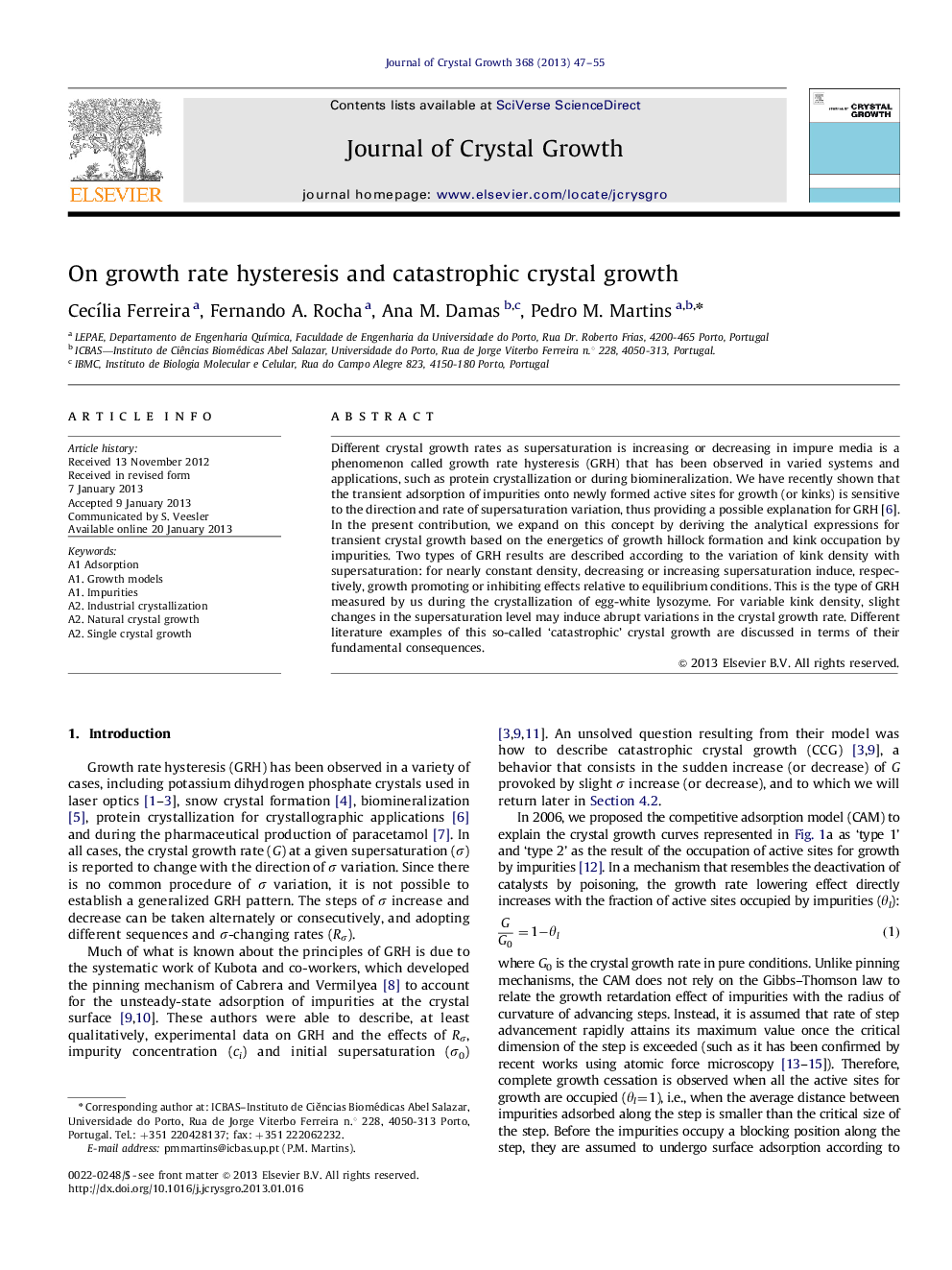| Article ID | Journal | Published Year | Pages | File Type |
|---|---|---|---|---|
| 1791155 | Journal of Crystal Growth | 2013 | 9 Pages |
Different crystal growth rates as supersaturation is increasing or decreasing in impure media is a phenomenon called growth rate hysteresis (GRH) that has been observed in varied systems and applications, such as protein crystallization or during biomineralization. We have recently shown that the transient adsorption of impurities onto newly formed active sites for growth (or kinks) is sensitive to the direction and rate of supersaturation variation, thus providing a possible explanation for GRH [6]. In the present contribution, we expand on this concept by deriving the analytical expressions for transient crystal growth based on the energetics of growth hillock formation and kink occupation by impurities. Two types of GRH results are described according to the variation of kink density with supersaturation: for nearly constant density, decreasing or increasing supersaturation induce, respectively, growth promoting or inhibiting effects relative to equilibrium conditions. This is the type of GRH measured by us during the crystallization of egg-white lysozyme. For variable kink density, slight changes in the supersaturation level may induce abrupt variations in the crystal growth rate. Different literature examples of this so-called ‘catastrophic’ crystal growth are discussed in terms of their fundamental consequences.
► The competitive adsorption model comprising kink occupation dynamics is presented. ► The model describes unsteady-state crystal growth inhibition by impurities. ► Puzzling cases of growth rate hysteresis and catastrophic growth are explained. ► The impurity effects can be controlled by changing supersaturation with time.
